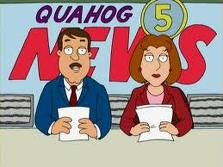Rogue waves by the numbers
The widely accepted definition is a wave roughly three times the average height of its neighbors.
No one is certain yet just how frequently freak waves form; accurate numbers are extremely difficult to collect given the waves' rare and transient nature. With more sophisticated monitoring and modeling—and as first-hand accounts are taken more seriously—the waves' prevalence appears to be rising. "[Rogue waves] are all short-lived, and because ships are not everywhere, the probability that a ship encounters one is relatively small," says Daniel Solli, who studies the optical version of rogue waves at the University of California, Los Angeles. "But with increasing amounts of oceanic traffic in the future, the likelihood of encountering them is getting larger."
Forming fearsome waves
Various theories exist for how rogue waves form. The simplest suggests that small waves coalesce into much larger ones in an accumulative fashion—a faster one-meter wave catches up with a slower two-meter wave adding up to a three-meter wave. One burgeoning wave can actually soak up the energy of surrounding waves.
Wednesday, November 24, 2010
Thursday, November 18, 2010
Quahog and Cherry Stone clams
I lived on Cape Cod as a child and I remember eating these raw with my Mom. Mmm...they were so yummy.
Quahog
Cherry Stones
Quahog
Cherry Stones
Wednesday, November 10, 2010
Enviornmental Sensitivity Map
 Environmental Sensitivity Index (ESI) systematically compiles information in standard formats for coastal shoreline sensitivity, biological resources, and human-use resources. ESI maps are useful for identifying sensitive resources before a spill occurs so that protection priorities can be established and cleanup strategies designed in advance."
Environmental Sensitivity Index (ESI) systematically compiles information in standard formats for coastal shoreline sensitivity, biological resources, and human-use resources. ESI maps are useful for identifying sensitive resources before a spill occurs so that protection priorities can be established and cleanup strategies designed in advance."
Subscribe to:
Posts (Atom)




